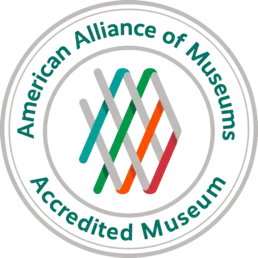Xicanx Month 2025
Following SAMA on socials? This August, we are highlighting artworks to celebrate Xicanx Month, a city-wide celebration commemorating the Chicano Arts Movement that holds its roots in San Antonio.
Find all the artwork we’re highlighting throughout the month below and see what we’ve shared in last year’s blog: Xicanx Month.
Healer No. 1: Treatment for romadizo, a viral infection of the upper respiratory
Sandy Rodriguez (Chicana, born National City, CA, 1975), Healer No.1: Treatment for romadizo, a viral infection of the upper respiratory, 2019, Pigment on amate, Framed: 47 × 31 in. (119.4 × 78.7 cm), On loan from Diana Magaloni, L.2025.10, © Sandy Rodriguez
Healer No. 1: Treatment for romadizo, a viral infection of the upper respiratory is artist Sandy Rodriguez’s contemporary representation of a healing practice sourced from the Florentine Codex, a set of encyclopedias of Nahua knowledge created by both Spanish and Indigenous scholars in early colonial Mexico. Hand processed pigments are signature elements in the artist’s practice. Painted on the morning dew of a cornstalk is the pigment known as Maya Blue, made by combining natural clay and crushed indigo. The artist's chosen support is a type of bark paper dating back to pre-Hispanic times called amate. Both amate and Maya Blue were highly symbolic materials in Mesoamerica and used in rites and practices.
Identifying as a Chicana artist, Rodriguez pays tribute to a movement rooted in Indigenous and Mexican heritage. Her work reflects on current social and political events through materials originating from pre-Hispanic and colonial eras of Mexico. By collapsing the space between ancient and contemporary life, Rodriguez proposes that progress is often a nonlinear force, echoing across time and space.
Señora Dolores Treviño
Jesse Treviño (American, 1946-2023), Señora Dolores Treviño, 1983, Acrylic on canvas, 53 1/2 x 85 1/2 in. (135.9 x 217.2 cm), San Antonio Museum of Art, Purchased with funds from Guy Bodine, Charles Butt, Dr. Alfonso Chiscano, George Cortez, Dr. Burton Grossman, Carolyn Harte, Sarah Harte, Frank Herrera, Rosemary Kowalski, Lionel Sosa, Marshall and Patsy Steves, Domingo Vara, and Juan Vasquez, 94.16, © The Estate of Jesse Treviño
Clad in an apron and clutching a laundry basket at her hip, a woman stares boldly at the viewer. She is the artist’s mother, Dolores Treviño, whom he honors through a heroic portrait that monumentalizes everyday experience and dignifies her labor as a mother and wife. Reinforcing this sense of heroism is the dramatic sweep of the windblown laundry on the clothesline, which resembles the swirling drapery folds commonly found in ancient sculptures or Old Master paintings of mythological gods and goddesses.
Jesse Treviño first gained attention in the 1970s for his photorealistic paintings that depict people in San Antonio’s West Side neighborhood and celebrate Mexican American history, culture, and community. After tragically losing his right arm after an explosion during the Vietnam War, Treviño masterfully re-learned to paint left-handed.
Bato con High School Jacket
César A. Martínez, American, born 1944, Bato con High School Jacket, 1986, Acrylic on canvas, 64 1/2 x 59 1/2 in. (163.8 x 151.1 cm), San Antonio Museum of Art, purchased with the Tom Slick Estate Acquisition Fund, 90.76.1, © César A. Martínez
Like a character in a novel, the bato (or “guy”) in this painting is a fictional portrait or type, a composite of memories, real people, and images. Artist César A. Martínez draws inspiration from yearbooks, magazines, and his childhood memories of growing up in Laredo for his paintings of batos and pachucos (members of a zoot-suit sporting Chicano subculture). He was a major figure in the Chicano Art Movement of the late 1970s and 1980s, and his paintings telegraph specifically South Texas history of art.
César A. Martínez was born in Laredo, TX, in 1994. After serving time in the armed forces, Martínez relocated to San Antonio in 1971, where he has lived ever since. Early in his career, he was a member of the local Chicano art groups Con Safo and Los Quemados (the Burned Ones), preeminent art collectives of Texas.

